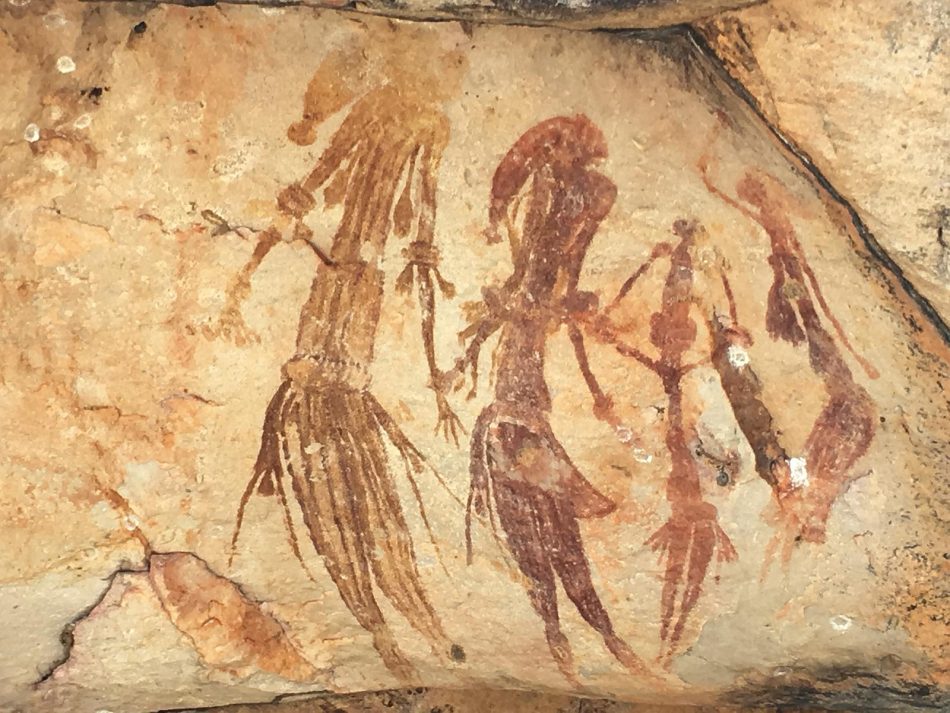Gwion style rock paintings in the Kimberley region of Australia are twice as old as the Giza pyramids, but until recently, scientists had a hard time telling exactly how old they were. Now, they are able to date the paintings to 12,000 years ago with the help of an unlikely ally: wasps.
Using wasp nests affixed to the rocks, scientists from the University of Melbourne were able to calculate the age of these Aboriginal paintings. If a painting is below a nest, it must be older than it, above it and it must be younger. With the permission of Traditional Owners, scientists collected 100 mud wasp nests and used radiocarbon dating to identify how old they were.
The paintings vary in size from 15 centimeters to over 2 meters tall and depict graceful human figures with a wide range of decorations including headdresses, armbands, and anklets. Radiocarbon dating had previously not been able to be used on the paintings themselves due to a lack of organic matter in the pigments.
Dating these paintings is a key step in establishing the cultural and historical context of their creation. Innovative scientific solutions such as this allow scientists and anthropologists to work to paint a complete picture of life on earth 12,000 years ago.












